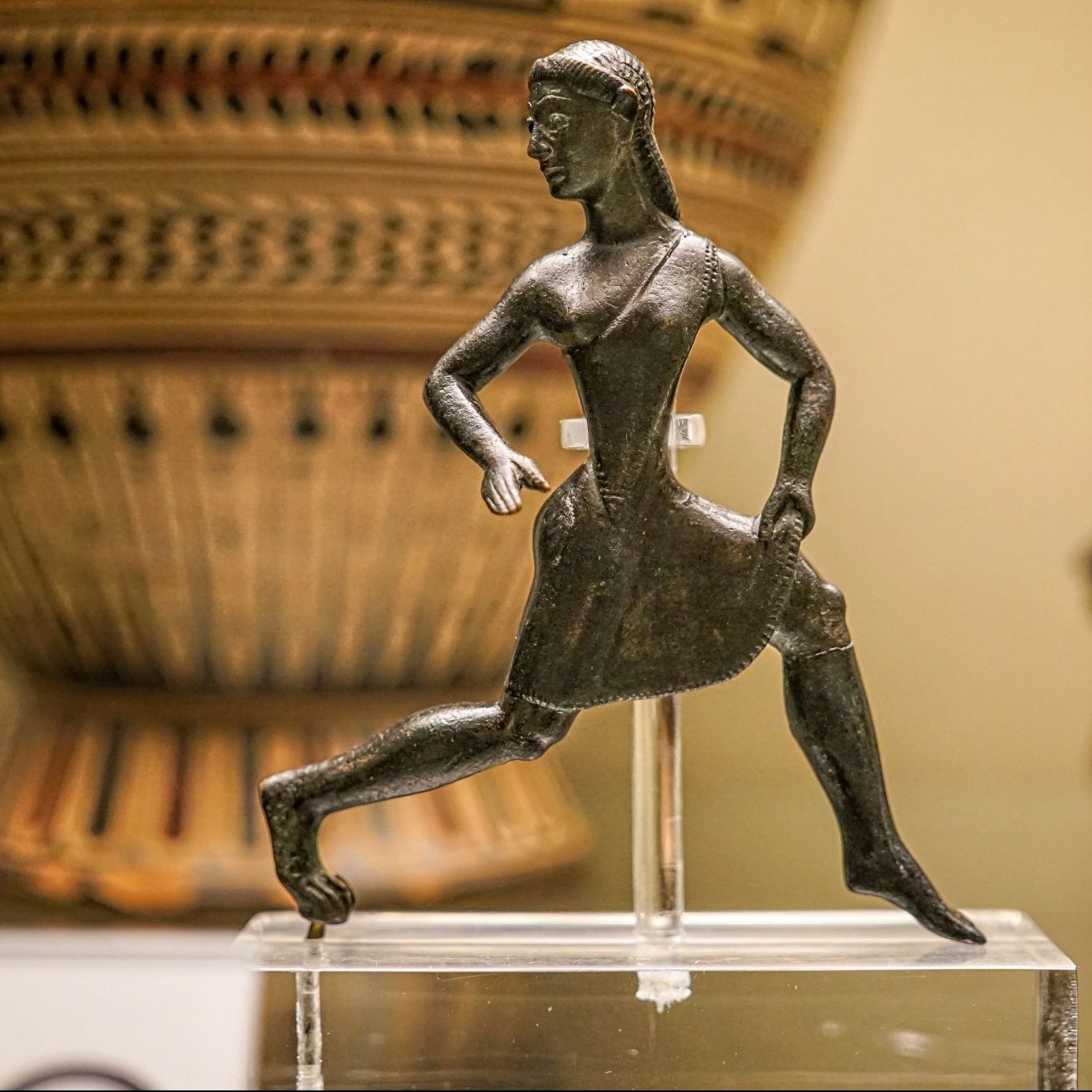Paris, August 8, 2021
Prof. Dr. Jahja Drancolli
“The history of the participation of prominent personalities of the Republic of Kosova (DARDANIA) in the Olympic Games dates from antiquity, with “The Runner of Prizren” in athletics, on 5th century BC, to the present day with Majlinda Kelmendi, champion of the Olympic Games in Judo Rio2016, and Distria Krasniqi and Nora Gjakova champions of the Olympic Games also in Judo Tokyo2021. In this context, it is known that the administration of the British Museum in London, in 1876 (with the number 208), had registered an important archaeological object called “The Runner of Prizren” (“Running female figure”)*, discovered and brought from the area of Prizren. Its values are variable. First, we are dealing with an object from the end of the 6th century and the beginning of the 5th century BC, who had participated in one of the Olympic Games of the time. Secondly, we are dealing with a figure of high artistic and aesthetic level, which has attracted the attention of almost all well-known scholars of fine arts, as well as scholars of archaeological, spiritual and similar fields, who have almost the same opinion and appreciation. So, according to them, the figurine runs to the right with the body turned forward looking down to the right, and holding the dress up in the hand, she is wearing a folded skirt falling from the right arm, bounded on both sides, and the hair is scaled in parallel from behind. Other parts of the “xhubleta” (read joobleta) skirt are missing. Also very visible are her large eyes. The figurine possesses movement and liveliness in line with the dance she is playing. The care and symmetry of the hair in this figure of Prizren stands out. All these figurine features make it stand out from many other figurines of the time. “The Runner of Prizren”, as she was called and still is in the British Museum in London, has a height of 11.4 cm. Today, in addition to the British Museum in London, “The Runner of Prizren”, who had participated as a Dardanian athlete in one of the Olympic Games of the 5th century BC, we can find her very stable in the “Encyclopedia of Global Archeology” as well (J. Drançolli; “Kosovo: Archaeological Heritage”, Springer, 2014, eds. Claire Smith, p. 4310; J. Drançolli; “Kosovo: Archaeological Heritage”, Springer, 2020, eds. Claire Smith, p. 6305), as archaeological heritage of ancient DARDANIA, respectively of the Republic of Kosova.”
*Jahja Drancolli, Kosova: Archaeological Heritage, in: Encyclopedia of Global Archaeology”, Springer, 2014, ed. Claire Smith, p. 4319; Jahja Drancolli, Kosova: Archaeological Monografy Heritage, in Encyclopedia of Global Archaeology, uSpringer, 2020, ed. Claire Smith, p. 6305; J. Drancolli, “The Runner of Prizren” that stopped in London, in: Monument, vol. II, Koha Ars, 2015, po. 74-79.
Translated from Albanian by Micky Haxhiislami.



 The Runner from Prizren, the British Museum, London, n=°208.
The Runner from Prizren, the British Museum, London, n=°208.